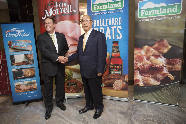The Hidden Risks in China’s Leapfrog Overseas Acquisitions
Bucking the Globalization Trend
Zhou Shuyuan is general manager of Towers Watson Mergers & Acquisitions (China), a U.S.-based global professional services firm. She points out that Chinese firms have eschewed the conventional “Uppsala” model of globalization, whereby firms enter foreign countries in increasing order according to the “cultural distance” from the home country and gradually increase their commitment to a particular country once they learn about it. Rather, most Chinese corporations have adopted a “leapfrog strategy” in their globalization processes.
A 2012 study of Chinese transnational enterprises released by Towers Watson indicated that 57 percent of surveyed Chinese firms had first entered the more expansive markets of North America, Europe, Middle East and Africa before they entered neighboring Asian emerging markets. Africa and the Middle East have been the main beneficiaries of Chinese investment.
Prior to the sensational global acquisitions made by Wanda and SANY Heavy Industry, a dozen Chinese firms had already been operating under the leapfrog model. These include automobile manufacturer Geely Holding Group in its acquisition of the Volvo Group, furniture manufacturer Mengnu Group in its merger with U.S.-based sofa bed seller Jennifer Convertibles, and Ausnutria Dairy Corporation with its acquisition of Netherlands-based Hyproca Dairy Group.
So why are so many Chinese transnational enterprises adhering to the leapfrog model in their global expansion?
Liu Wenbo, vice president and partner of Roland Berger Strategy Consultants Greater China, indicated that Chinese companies, by directly entering the relatively high-end European and American markets instead of exploring the developing markets more similar to China’s, could improve their abilities in management, technology and product development in a short time frame through mergers and acquisitions. “In particular, after the global financial crisis and the European debt crisis, and as asset values in Europe and North America plummeted, the tendency for Chinese firms to employ the leapfrog model has become increasingly apparent,” Liu added.
In some cases, however, Chinese firms have been compelled to adopt the “leapfrog model” owing to circumstances, Zhou pointed out. In terms of the distribution of global mineral resources, for example, most high quality, readily accessible mineral resources have been held by global energy giants like BP and BHP Billiton. Chinese firms, in their efforts to secure their own sources of mineral wealth, have had to head for marginal or politically turbulent regions in the Middle East and Africa.
Of course, some enterprises have chosen the leapfrog model according to their corporate management principles. For example, to improve product quality and service levels, Haier Group has been following the principle of “difficult first, easy later.” Accordingly, it first entered developed countries and then expanded to neighboring countries. In 1990 Haier exported 20,000 refrigerators to Germany, its first sales in the international market. Now Haier is number one in Germany’s market for multi-door refrigerators, with a market share of 75.9 percent.
Buffering Against Leapfrog Risks
In contrast to the traditional Uppsala model, which champions low exposure to risk and a prolonged globalization process, the leapfrog strategy could spell huge operational risks for firms. On the plus side, “leapfrogging” firms can become truly global in a short space of time.
In Zhou Shuyuan’s opinion, although Haier’s unconventional expansion strategy has seen great success, its model is not suitable for many Chinese enterprises. By exposing themselves to high product development, marketing and production costs, Chinese firms following Haier’s example put themselves at considerable financial risk.
In carrying out cross-national business operations, most firms from developed countries have decades or over a century of management expertise and experiences to fall back on, Zhou elaborated. However, as Chinese enterprises rapidly expand their business abroad, many are equipped with only a short history in global business management, or with none at all. Even the most experienced Chinese firms can only boast 20 to 30 years of international operations.

